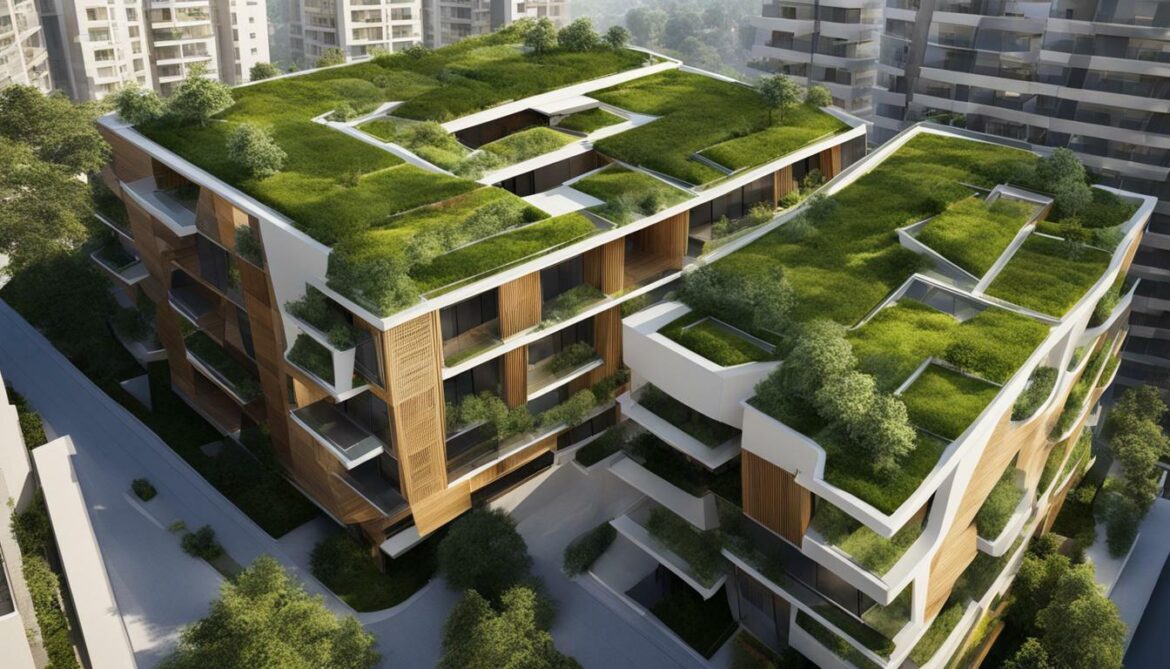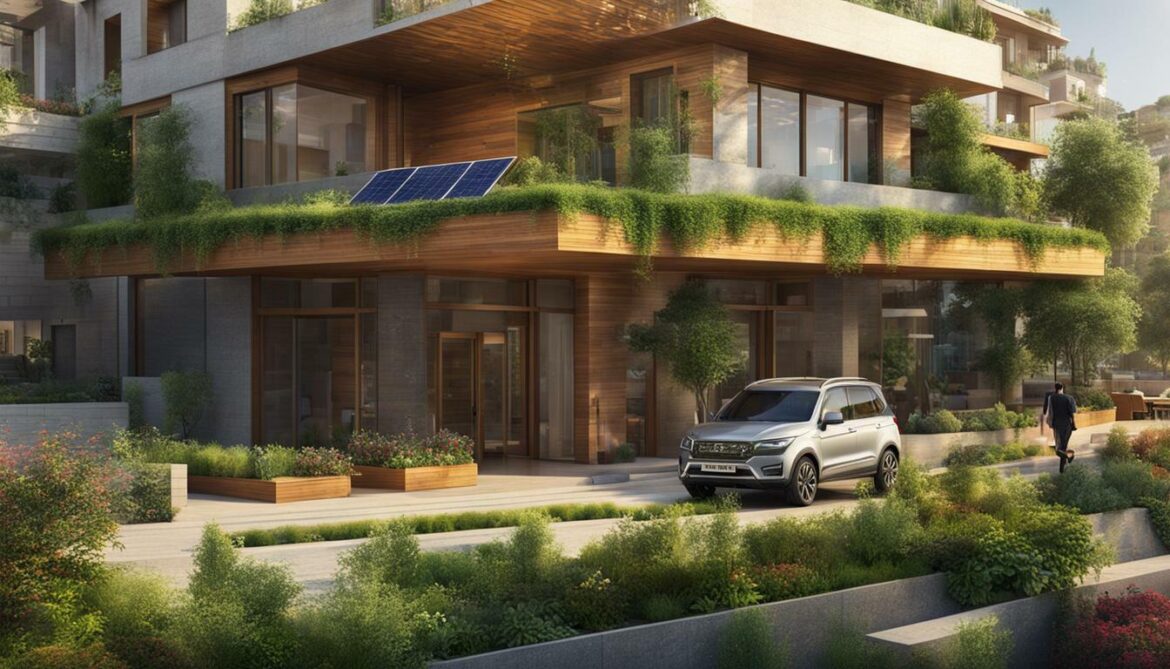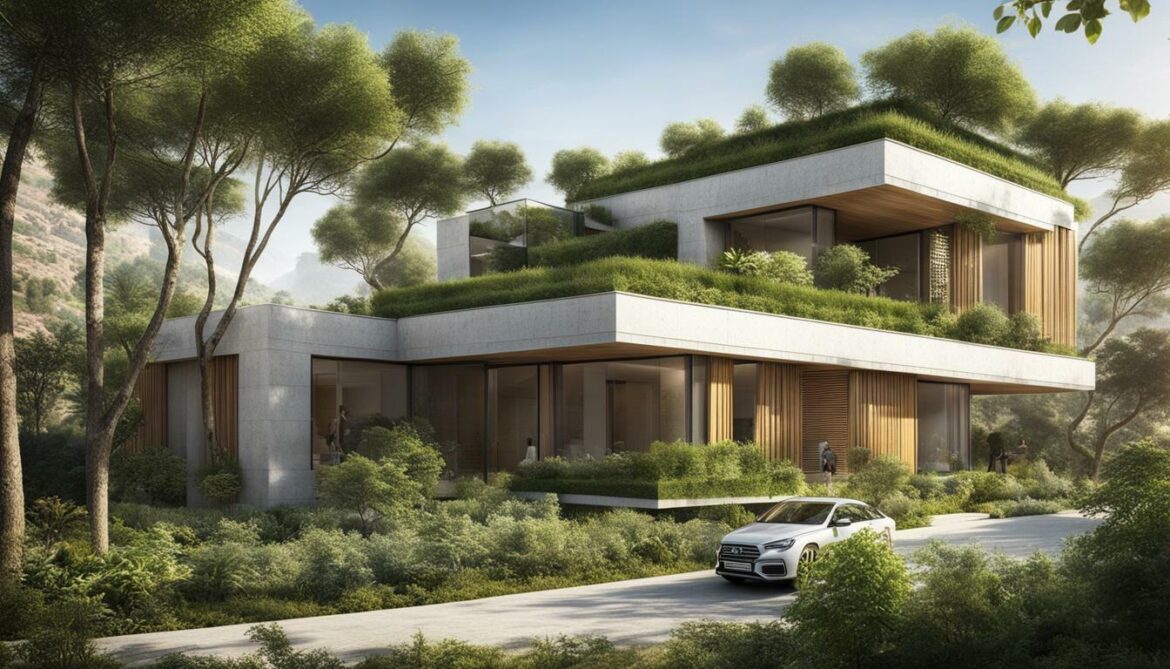https://www.researchgate.net/publication/339941101_Near_Zero-Energy_Buildings_in_Lebanon_The_Use_of_Emerging_Technologies_and_Passive_Architecture
https://scenearabia.com/Life/reclaiming-space-inside-lebanon-contested-post-war-landscape-CAL-architecture-urban-planning?M=True
UNESCO PDF
https://www.thenationalnews.com/arts-culture/art/2021/12/06/the-lebanese-architect-offering-an-innovative-approach-to-sustainable-architecture/
Lebanon has a rich history of green building, with a strong emphasis on sustainable construction practices and environmental-friendly buildings. The country has been at the forefront of the green building movement, showcasing its commitment to creating a more sustainable future.
- Lebanon has a long-standing tradition of sustainable construction practices.
- The country’s green building movement has grown significantly over the years.
- Lebanon’s commitment to environmental-friendly buildings has led to innovative design techniques and materials.
- The Lebanese construction industry has embraced sustainable development initiatives.
Lebanon’s dedication to sustainable construction has not only contributed to the preservation of the environment but has also set an example for other countries to follow. With a strong focus on green building practices, Lebanon continues to pave the way for a more sustainable future.
The Beginnings of Sustainable Architecture in Lebanon
The journey towards sustainable architecture in Lebanon began with the adoption of eco-friendly construction practices, paving the way for the country’s commitment to a greener future. As the construction industry evolved, architects and builders recognized the importance of minimizing environmental impact and conserving resources.
Lebanon’s sustainable architecture movement gained momentum in the late 20th century, with a focus on incorporating innovative design techniques and sustainable materials into construction projects. Architects started integrating energy-efficient systems, such as solar panels and natural ventilation, to reduce reliance on non-renewable resources and lower carbon emissions.
Furthermore, the use of locally sourced materials became a prominent feature of eco-friendly construction practices in Lebanon. By utilizing materials like stone, timber, and clay from nearby sources, architects sought to minimize transportation-related carbon emissions and support local economies. This approach not only reduced the environmental footprint of construction projects but also celebrated Lebanon’s rich architectural heritage.
Lebanon’s sustainable architecture is a testament to the country’s commitment to sustainable development and environmental stewardship. By embracing eco-friendly construction practices, Lebanon aims to create buildings that harmoniously coexist with the surrounding natural environment, promoting a greener and healthier future for all.

| Benefits of Sustainable Architecture in Lebanon |
|---|
| Reduction in energy consumption and carbon emissions. |
| Promotion of a healthier indoor environment through improved air quality and natural lighting. |
| Preservation of local ecosystems by minimizing habitat destruction and land degradation. |
| Support for the local economy through the use of locally sourced materials. |
| Enhancement of Lebanon’s architectural heritage by integrating traditional design elements. |
The Growth of Green Building Movement in Lebanon
Over the years, Lebanon has witnessed significant growth in the green building movement, becoming a pioneer in sustainable architecture in the region. The country’s commitment to reducing environmental impact and promoting sustainable construction practices has resulted in the development of innovative and eco-friendly buildings.
One of the key driving forces behind the growth of green building in Lebanon is the Lebanon Green Historic District. This area encompasses the historic town center of Lebanon and is home to various historic buildings and landmarks. The district has played a crucial role in preserving Lebanon’s architectural heritage while promoting sustainable development.
Lebanon’s sustainable architecture is characterized by the use of environmentally-friendly materials, energy-efficient design, and the incorporation of renewable energy sources. From residential buildings to commercial complexes, sustainable construction practices are implemented to minimize energy consumption, reduce waste, and create healthier indoor environments.
Moreover, Lebanon’s green building movement has had a positive impact on the construction industry by creating new job opportunities and driving economic growth. The adoption of sustainable practices has not only benefited the environment but has also helped to build a greener and more resilient future for the country.

| Year | Event |
|---|
| 2009 | Establishment of the Lebanese Green Building Council |
| 2012 | Introduction of Lebanon’s first sustainable building code |
| 2015 | Launch of the Lebanon Green Building Awards |
| 2018 | Completion of Lebanon’s first net-zero energy building |
| 2020 | Implementation of the National Green Building Strategy |
As Lebanon continues to prioritize sustainable architecture and construction practices, it sets an example for other countries in the region. The growth of the green building movement not only contributes to the conservation of resources and the protection of the environment but also enhances the quality of life for its residents.
Sustainable Development in the Lebanese Construction Industry
The Lebanese construction industry has made remarkable strides in sustainable development, prioritizing ecological harmony and environmental preservation. With a focus on integrating sustainable practices into all aspects of construction, the industry is paving the way for a greener future in Lebanon.
One of the key initiatives undertaken by the industry is the adoption of green building standards and certifications. Developers and architects are increasingly incorporating energy-efficient designs, renewable energy sources, and innovative materials into their projects. This commitment to sustainable construction not only reduces the environmental impact but also improves the energy efficiency and overall quality of buildings.
Moreover, the Lebanese construction industry is actively promoting sustainable practices in the entire construction lifecycle. From the use of environmentally-friendly construction materials to the implementation of waste management systems, every stage of the construction process is being carefully considered. This holistic approach ensures that sustainability is at the forefront of every project, contributing to the overall well-being of both people and the planet.
| Sustainable Development Initiatives in the Lebanese Construction Industry | Benefits |
|---|
| Green building certifications (such as LEED) | Improved energy efficiency and reduced environmental impact |
| Integration of renewable energy sources | Reduced reliance on fossil fuels and lower carbon emissions |
| Utilization of eco-friendly construction materials | Reduced resource consumption and waste generation |
Overall, sustainable development in the Lebanese construction industry is not just a trend but a long-term commitment to creating a more environmentally conscious and resilient built environment. By embracing sustainable practices and technologies, Lebanon is setting a positive example for the region and beyond.

Lebanon stands at the forefront of constructing environmental-friendly buildings, employing cutting-edge design techniques and sustainable materials. The country’s dedication to green building practices is evident in its commitment to preserving the environment and promoting sustainable development in the construction industry. Through innovative architectural designs and the use of eco-friendly materials, Lebanon is setting an example for other nations to follow.
One notable area that showcases Lebanon’s commitment to environmental-friendly buildings is the Lebanon Green Historic District in Connecticut. This significant area encompasses the historic town center, featuring a mile-long town green and various historic buildings. The green itself, perched on a clay layer, exemplifies the country’s efforts to integrate nature into its architectural landscape. By preserving this historic district and incorporating sustainable design principles, Lebanon demonstrates its commitment to both heritage preservation and environmental sustainability.
Lebanon’s dedication to constructing environmental-friendly buildings extends beyond historic districts. Throughout the country, architects and developers are implementing green building practices, such as utilizing renewable energy sources, incorporating energy-efficient systems, and adopting sustainable construction materials. These initiatives not only reduce the environmental impact of buildings but also contribute to energy savings, environmental preservation, and the well-being of residents and communities.
In conclusion, Lebanon’s commitment to environmental-friendly buildings is evident in its adoption of sustainable design techniques and materials. By prioritizing green building practices, the country is not only contributing to a more sustainable future but also setting an example for other nations to follow. Through initiatives like the Lebanon Green Historic District and the wider adoption of environmentally-conscious construction practices, Lebanon continues to lead the way in promoting sustainable architecture and preserving its natural and architectural heritage.

| Advantages of Environmental-Friendly Buildings in Lebanon |
|---|
| Eco-friendly materials reduce the carbon footprint of construction projects. |
| Energy-efficient systems contribute to long-term energy savings. |
| Renewable energy sources reduce dependence on fossil fuels. |
| Sustainable design techniques enhance the overall well-being of residents and communities. |
| Preservation of architectural heritage in historic districts. |
The Role of Lebanon Green Historic District
The Lebanon Green Historic District has played a vital role in preserving Lebanon’s architectural heritage while fostering the growth of sustainable construction practices. This significant area encompasses the historic town center of Lebanon in Connecticut and includes a mile-long town green and various historic buildings. The green itself is a rare 18th-century example of a town common in Connecticut, surrounded by numerous historic buildings, including private homes in various architectural styles.
One of the notable buildings within the Lebanon Green Historic District is the National Historic Landmark John Trumbull Birthplace, which adds to the district’s historical significance. Additionally, the 1730 War Office, another historic building in the area, further showcases the rich heritage preserved within the district. With its placement on the National Register of Historic Places in 1978, the Lebanon Green has been recognized for its historical importance and serves as a testament to the town’s past.
“The Lebanon Green was placed on the National Register of Historic Places in 1978 due to its historical significance.”
Beyond its historical value, the Lebanon Green Historic District has also become a hub for sustainable construction practices. As the district promotes the preservation of Lebanon’s architectural heritage, it has encouraged the adoption of environmentally-friendly building techniques. The district’s commitment to sustainability is reflected in the various innovative design techniques and materials used in its historic and new construction projects. Through this fusion of preservation and sustainability, the Lebanon Green Historic District has become a prime example of how historic areas can embrace and promote green building practices.

Implications of Green Building in Lebanon
The adoption of green building practices in Lebanon has led to a paradigm shift in the construction industry, promoting sustainable development and creating a greener future. With a growing awareness of environmental issues and the need for more sustainable construction practices, the Lebanese construction industry has embraced green building techniques and principles. This shift towards sustainability has had several positive implications for both the industry and the environment.
One of the key implications of green building in Lebanon is the reduction of carbon emissions and the conservation of natural resources. By incorporating energy-efficient designs, renewable energy systems, and sustainable materials, green buildings in Lebanon are significantly reducing their carbon footprint. This not only helps combat climate change but also reduces energy consumption and operating costs for building owners.
Furthermore, the use of green building practices in Lebanon has also contributed to the creation of healthier living and working environments. Buildings that prioritize indoor air quality, natural ventilation, and the use of non-toxic materials have a positive impact on human health and well-being. This focus on occupant comfort and health has become a crucial aspect of sustainable construction in Lebanon.
The adoption of green building practices in Lebanon has also stimulated innovation and economic growth in the construction industry. As the demand for sustainable buildings increases, architects, engineers, and contractors are pushing the boundaries of design and construction methods. This has resulted in the development of new technologies and solutions that promote sustainable development and boost the local economy.
| Benefits of Green Building in Lebanon | Implications |
|---|
| Reduced carbon emissions | Contribution to combating climate change |
| Energy savings | Lower operating costs for building owners |
| Improved indoor air quality | Enhanced occupant health and well-being |
| Economic growth | Stimulated innovation and job creation in the construction industry |
The implications of green building in Lebanon extend beyond individual buildings. The adoption of sustainable practices in the construction industry has the potential to alleviate the strain on natural resources, minimize environmental degradation, and create a more resilient and sustainable built environment. As Lebanon continues to prioritize sustainable development, the growth of green buildings will play a vital role in shaping a greener and more sustainable future for the country.

The adoption of green building practices in Lebanon has had far-reaching implications for the construction industry and the environment. By embracing sustainable design, energy efficiency, and occupant well-being, green buildings in Lebanon are promoting a greener future and contributing to sustainable development. As the industry continues to innovate and prioritize environmental responsibility, Lebanon is well-positioned to lead the way in green building practices and set an example for the rest of the world.
Conclusion
The Lebanon Green Building History showcases Lebanon’s remarkable journey towards sustainable architecture, with a strong emphasis on eco-friendly construction practices and environmental-friendly buildings. Over the years, Lebanon has demonstrated its commitment to creating a greener future by adopting sustainable development initiatives in the construction industry.
From the beginnings of sustainable architecture to the growth of the green building movement, Lebanon has continuously strived to align itself with global environmental standards. The country’s dedication to constructing environmentally-friendly buildings is evident in the innovative design techniques and materials used.
One significant milestone in Lebanon’s sustainable architecture journey is the Lebanon Green Historic District. This area, encompassing the historic town center of Lebanon, not only promotes green building practices but also preserves the country’s architectural heritage. With its mile-long town green and various historic buildings, the district holds a special place in Lebanon’s history and serves as a reminder of its eco-conscious efforts.
The implications of green building in Lebanon are far-reaching. Not only does it positively impact the construction industry, but it also contributes to sustainable development and environmental preservation. By prioritizing eco-friendly construction practices, Lebanon sets an example for other countries to follow in the pursuit of a greener and more sustainable future for all.
FAQ
What is the significance of the Lebanon Green Historic District?
The Lebanon Green Historic District encompasses the historic town center of Lebanon and includes a mile-long town green and various historic buildings. It played a crucial role in the American Revolutionary War and is home to the National Historic Landmark John Trumbull Birthplace and the 1730 War Office.
Why was the Lebanon Green placed on the National Register of Historic Places?
The Lebanon Green was placed on the National Register of Historic Places in 1978 due to its historical significance. It is a rare 18th-century example of a town common in Connecticut and is surrounded by numerous historic buildings, including private homes in various architectural styles.
What was the ownership dispute surrounding the Lebanon Green?
Ownership of the green became a contentious issue in recent years, with the Town of Lebanon pursuing legal ownership of the parcels through the courts.
How many Lebanon men served in the American units during the Revolution?
Over 677 Lebanon men served in the American units during the Revolution, representing more than 50% of the adult population at the time.
Source Links
























Post comments (0)